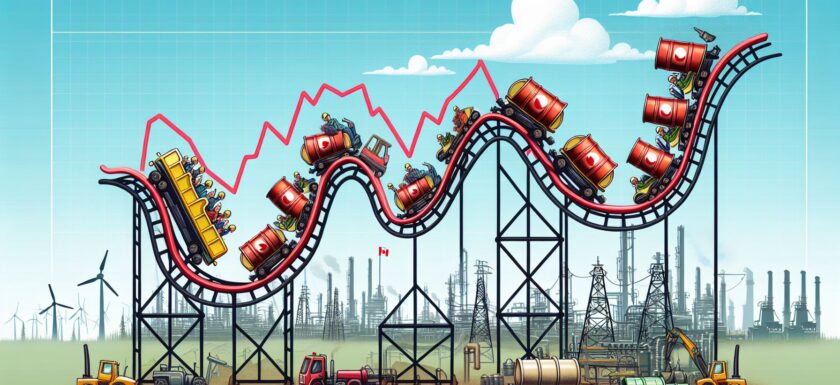The oil and gas industry in Canada has been a topic of much discussion and debate in recent years. It is a sector that has seen its fair share of booms and busts, leaving many people perplexed about its future. While the industry plays a significant role in Canada’s economy, providing employment opportunities and contributing to the country’s GDP, it is not without its challenges.
The rollercoaster ride of Canada’s oil and gas industry
Canada is known for its abundant natural resources, and oil and gas reserves are no exception. With vast reserves nestled beneath its vast landscapes, the country has long been a major player in the global oil industry. However, the fate of this industry has been far from stable, and it has experienced several ups and downs.
The most notable boom in the industry occurred in the early 2000s when global oil prices skyrocketed, and Canada’s oil sands became an attractive investment for many major international players. This led to an influx of capital, job creation, and economic growth in several provinces, particularly Alberta. The industry was booming, and it seemed like the good times would last forever.
But alas, what goes up must come down. The global financial crisis of 2008 hit the industry hard, as oil prices plummeted and investments dried up. The boom quickly turned into a bust, leaving behind a trail of job losses, economic downturn, and uncertainty. The industry came face to face with its vulnerability, and many questioned its long-term sustainability.
The environmental challenge
Apart from the economic and financial challenges, the oil and gas industry in Canada also faces a significant environmental challenge. The extraction and production of oil and gas have a considerable carbon footprint, contributing to greenhouse gas emissions and climate change. This has put the industry in the crosshairs of environmental activists and policymakers, who argue for transitioning to cleaner and more sustainable energy sources.
The industry has made efforts to address these concerns, adopting cleaner technologies and improving environmental practices. However, the road to implementation has been bumpy, with debates around the effectiveness of these measures and the trade-offs they entail. Balancing economic growth, job creation, and environmental sustainability is a complex and perplexing task.
The path forward: navigating uncertainty
As the oil and gas industry in Canada looks toward the future, it faces a myriad of challenges and uncertainties. The global transition towards renewable energy sources, the increasing pressure to reduce greenhouse gas emissions, and the volatility of global oil prices are just a few factors that hang over the industry like a dark cloud. Navigating this uncertain terrain requires innovation, adaptability, and a willingness to embrace change.
Canada has the opportunity to position itself as a leader in the energy transition. Investing in research and development of clean technologies, promoting renewable energy sources, and diversifying the economy are some of the steps that can be taken to ensure a sustainable future. Collaborating with stakeholders, including Indigenous communities and environmental organizations, will be crucial in creating a balanced and inclusive approach.
With change comes opportunity. The oil and gas industry, despite its challenges, still has the potential to contribute to a prosperous and sustainable Canadian economy. However, it will require a collective effort from all stakeholders to overcome the hurdles and chart a path forward.
In conclusion
The oil and gas industry in Canada has certainly experienced its share of highs and lows. From boom to bust, it has been a rollercoaster ride that has left many perplexed about its future. Challenges, both economic and environmental, loom large, but with the right approach, the industry can navigate through uncertain waters. As Canada strives for a sustainable future, finding the delicate balance between economic growth and environmental stewardship will be key. The complexity of the issue demands collaboration, innovation, and a collective determination to shape a prosperous and sustainable energy future for the country.

